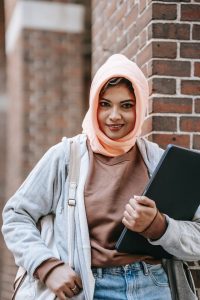
Introduction
In everyday campus life, there are special spots where Arab and Jewish students come together. Here, they make friends and share experiences that go beyond old conflicts.
In classrooms and clubs, students from different backgrounds work on projects side by side. They celebrate each other’s holidays and tell their own stories. By doing these things, they learn to care about one another and to understand different points of view. These friendships help them grow kinder, stronger, and more open-minded. In this article, we’ll look at how these bonds form, why they matter, and simple ways schools can help all students build respect and trust.
The Power of Shared Experiences
Shared activities serve as the cornerstone of emotional bonds between Arab and Jewish students. Engaging in joint projects, collaborative events, and shared extracurricular pursuits creates a common ground, transcending cultural differences. As students work side by side, shared experiences become the glue that binds them together.
Cultural Dialogues: Breaking Stereotypes
One of the most potent tools for building connections is through open dialogues. In these conversations, Arab and Jewish students engage in honest discussions, dismantling stereotypes and fostering a deeper understanding of each other’s backgrounds. These dialogues become a bridge between worlds, paving the way for empathy and respect.
Shared Experiences Spark Connections
1. Collaborative Learning Projects
Group activities like science experiments, art collaborations, or community service bring students together around common goals. When Arab and Jewish students solve problems as a team, they discover each other’s strengths and communication styles. This hands-on interaction fosters trust and shows that diverse perspectives can lead to better outcomes.
2. Classroom Discussions
Open discussions about current events or historical topics allow students to share personal insights. When kids listen to a classmate’s story of family traditions or community challenges, they build emotional understanding. Teachers who guide these conversations set ground rules for respect, ensuring everyone feels heard.
Cultural Exchange Deepens Understanding
1. Celebrating Festivals Together
Schools that mark both Jewish and Arab holidays such as Ramadan, Eid, Rosh Hashanah, or Hanukkah—create joyful occasions for sharing. Students taste traditional foods, learn basic greetings, and hear stories behind each festival. These experiences spark curiosity and help classmates appreciate how culture shapes identity.
2. Language Buddies
Pairing students to teach each other simple phrases like “Shalom” in Hebrew or “Salaam” in Arabic breaks language barriers. Language buddies practice greetings, common expressions, and classroom vocabulary. As they laugh through pronunciation mistakes, they grow more comfortable with each other’s culture.
Role of Teachers and Staff
1. Cultural Competence Training
Teachers benefit from workshops on intercultural communication and bias awareness. Educators skilled in handling sensitive issues can better facilitate discussions and spot tensions before they escalate.
2. Inclusive Curriculum Design
Integrating Arab and Jewish histories, literature, and arts into the curriculum ensures every student sees their culture reflected. This balanced approach shows that multiple narratives belong in the classroom.
Long-Term Benefits of Emotional Bonds
1. Enhanced Academic Success
Research shows students in inclusive environments often perform better academically. Emotional bonds reduce stress and boost motivation, making students more engaged in their studies.
2. Stronger Community Ties
Friendships formed in school often extend into neighborhoods. As these students grow up, they carry mutual respect into workplaces, civic life, and future families, strengthening social cohesion.
3. Lifelong Conflict-Resolution Skills
Learning to navigate cultural differences in youth equips individuals with strong communication and empathy skills. These abilities help them in personal relationships and professional settings alike.
Practical Steps for Schools
- Launch Joint Clubs: Start art, music, or sports clubs that require mixed membership.
- Host Cultural Fairs: Give students a platform to showcase heritage through food, dance, and crafts.
- Facilitate Joint Field Trips: Visits to cultural centers or historical sites build collective memories.
- Implement Reflective Journals: Have students write about intercultural experiences and share highlights.
- Engage Parents: Invite families to school events, fostering community-wide dialogue and trust.
These steps create ongoing opportunities for Arab and Jewish students to form meaningful emotional bonds.
Strategies for Fostering Unity
Navigating the complexities of Arab-Jewish relations requires thoughtful strategies. This section offers practical advice for students, educators, and administrators seeking to create an environment that nurtures unity. From inclusive policies to culturally sensitive programming, these strategies aim to fortify the emotional bonds forming in shared spaces.

Photo by Keira Burton: https://www.pexels.com
Voices from the Community
Amidst the exploration of strategies, the article pauses to amplify the voices of Arab and Jewish students. Their testimonials provide a raw and authentic glimpse into the impact of shared spaces on their lives. Through these stories, readers witness the power of emotional bonds in transcending cultural divides.
Comparative Table: Key Elements of Unity
To provide a clear overview, a comparative table distills the essential elements contributing to emotional bonds. Shared activities, open dialogues, mutual respect, and community testimonials emerge as the pillars supporting the bridge between Arab and Jewish students.
Table: Key Elements of Unity
| Key Element | Description |
|---|---|
| Shared Activities | Joint projects and events fostering collaboration |
| Open Dialogues | Honest conversations breaking down stereotypes |
| Mutual Respect | Building a foundation of respect and understanding |
| Community Testimonials | Real stories of positive experiences |
Challenges and Triumphs
Yet, the path to unity is not without its challenges. Arab and Jewish students face obstacles rooted in historical tensions, societal expectations, and personal biases. This section confronts these challenges head-on, exploring the nuanced landscape of shared spaces and the triumphs that arise when barriers are overcome.
1. Resistance from Families
Some parents may worry about cultural dilution or community pressure. Schools can host informational sessions explaining the benefits of intercultural friendships and showcasing positive student outcomes.
2. Handling Sensitive Topics
Discussions around conflict or religion can spark strong emotions. Establishing clear guidelines—such as “live and let live” agreements—helps maintain focus on empathy and understanding.
3. Sustaining Momentum
One-off events spark interest, but lasting bonds require consistent effort. Schools should embed intercultural activities into annual calendars, ensuring every cohort benefits.
Looking Ahead: The Future of Unity
Looking ahead, the friendships Arab and Jewish students build today could shape a kinder tomorrow. Schools might use apps and online groups so students can keep sharing stories and support, even when they’re far apart. Big brothers and sisters from both communities could mentor younger students, guiding them through new challenges with understanding and care.
In time, joint lessons in history, art, and science may become normal in every school. With these shared experiences, a new generation will see each other first as friends—not strangers. As these bonds grow, our campuses, communities, and beyond will become more connected, peaceful, and hopeful.
Conclusion
In summary, the article underscores the paramount importance of emotional bonds between Arab and Jewish students in shared spaces. It serves as a call to action, urging continued efforts to bridge divides and nurture an environment where unity flourishes. Through shared experiences, open dialogues, and mutual respect, the journey towards a more interconnected future begins.
Friendships between Arab and Jewish students can change whole communities. When they work together, celebrate each other’s traditions, and share real stories, they learn to care, respect, and solve problems peacefully. Schools can help by including everyone, training teachers, and supporting families. These class friendships spread kindness and teamwork beyond school. As students grow up, they carry these bonds and become young peacemakers. By planting these friendships today, schools grow a kinder, more united tomorrow.










